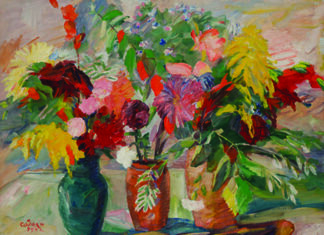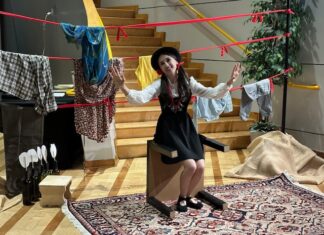
By Aram Arkun
Mirror-Spectator Staff
PARIS — On October 16 to 23, 2011, a major festival called “Arménie-Arménies,” or, in English translation, “Armenia-Armenias,” was organized in France celebrating Armenian culture and the 20th anniversary of independence of the Republic of Armenia. More than 20 Armenian writers and intellectuals from the Republic of Armenia and the diaspora took a train trip aboard the storied Orient Express from Marseille through Avignon, Valence, Lyon to Paris. Along the way, they gave talks on Armenian literature, politics, history, culture and society, participated in discussions, and met with representatives of the media. Traditional and liturgical Armenian music and jazz were performed on a number of occasions, a guided tour of Armenian manuscripts at the Bibliothèque National Française was given, and during the last two days of the festival, films of Sergei Paradjanov, Atom Egoyan and Robert Guédigian were shown. At least one art exhibition — the sculptures of Toros (Rast-klan, or Rastguelénian) and an exhibition of photographs by Antoine Agoudjian, were held. Armenian cuisine was discussed as well as tasted.
This itinerant festival was financially sponsored by the French Centre national du livre (CNL or the National Center of the Book), with the support of the cities visited, various local French and French-Armenian institutions and the French media. Armenian culture was the first to be celebrated in a series of forthcoming events that the CNL will organize as part of CNL Mondes (CNL Worlds). The CNL is an institution which is part of the French Ministry of Culture and Communication. The present minister of culture, Frédéric Mitterand — nephew of François Mitterand, the late president of France — was in favor of this decision.
CNL President Jean-François Colosimo explained in an interview with Krikor Amirzayan in Nouvelles d’Arménie that “Armenia occupies a special place in our hearts and spirits,” and in addition to what the French knew already about the Armenians, it was the presence of around 500,000 French-Armenians that led
to this choice. The CNL president visited Armenia twice and met with the Armenian minister of culture in order to obtain advice concerning the organization of the festival.









